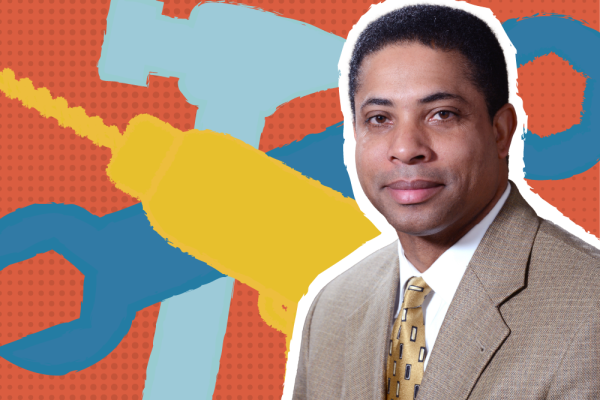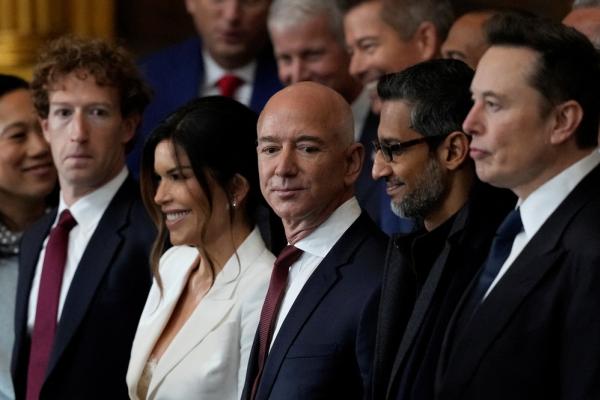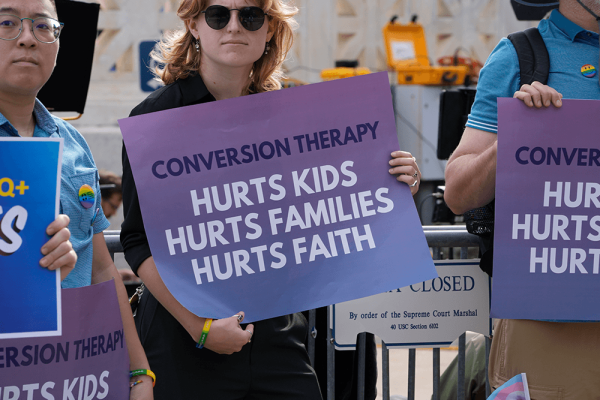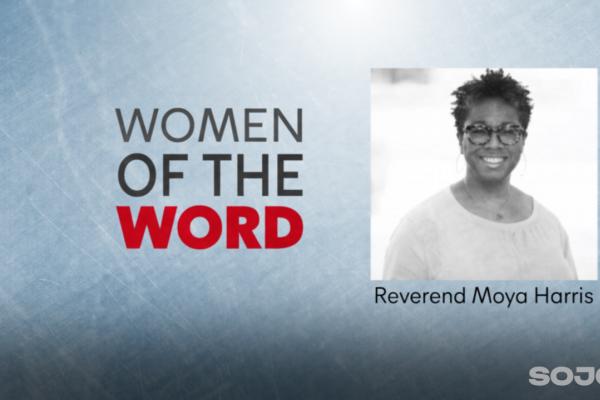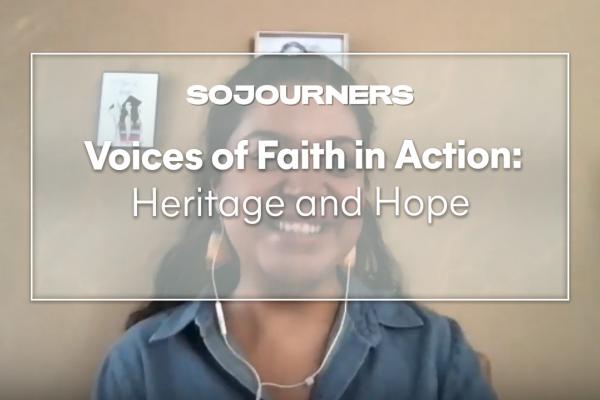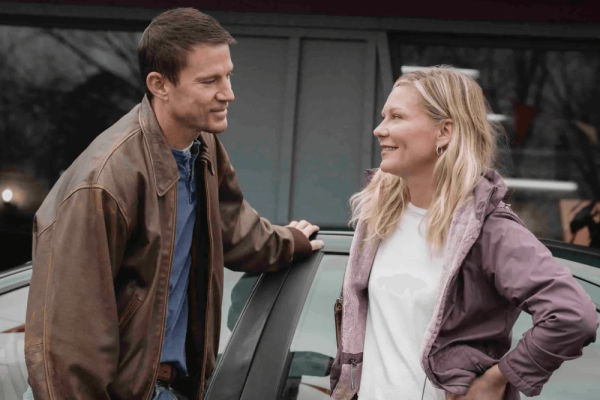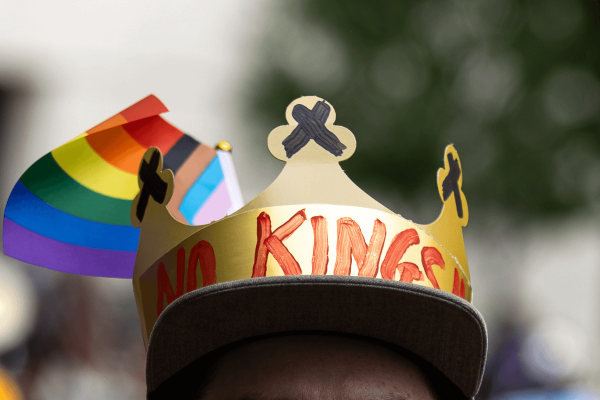This interview is part of The Reconstruct, a weekly newsletter from Sojourners. In a world where so much needs to change, Mitchell Atencio and Josiah R. Daniels interview people who have faith in a new future and are working toward repair. Subscribe here.
As I write, the federal government remains shut down, and with it, the Smithsonian and its numerous museums.
I suspect, however, that many in the executive branch aren’t losing sleep over a lack of access to publicly funded, rich, beautiful histories ranging from natural sciences to African American history. In the past year, the Trump administration has demanded those museums shape their presentation to his preferences, cut funding to these institutions, and lambasted the Smithsonian’s National Museum of African American History and Culture in particular.
Amid these attacks on a truthful telling of history, I spoke to Harry Singleton III, the faith-based director of the International African American Museum, to understand how a liberation theologian approaches the task of museum work. Singleton is the son of a Baptist minister; a native of South Carolina, where the museum is located; and a scholar who spent most of his time in academia before transitioning to the museum in June.
In our interview, we discussed the goals of the museum, why truthful histories are a key to a liberating future, and why President Donald Trump cares so much about museums.
This interview has been edited for length and clarity.
Mitchell Atencio, Sojourners: How do you describe your job?
Harry Singleton III, International African American Museum: After having spent 25 years in academe as a teacher, I still consider myself to be in the highly pedagogical position. It’s just that, now, I have transitioned from the classroom to a larger public.
Part of my pedagogical goal as a theologian and a historian is to educate the public, not only on how we arrived here historically, but also the theological ideas that have shaped the way we see each other and the way we see the life of the country.
So, in that sense, I have made a transition to essentially doing the same thing, but doing it in a different way, as it relates to curatorial additions, public programs, and recruiting museum donors. The actual particulars have changed, but what’s being accomplished is fundamentally the same.
What made you interested in stepping into a role of educating the broader public and not just the academy?
My father was an educator; he was an Earth science teacher. But he was also a Baptist minister and a social activist. He spent over 25 years in the NAACP, he was a local branch president in Conway, S.C., where I grew up, and was actively involved in the civil rights struggle post-Rev. Martin Luther King Jr. That had a tremendous influence on me as a growing young man.
The public aspect of this position was something that I could not pass up. It was one that did not tie me to ecclesial duties on a weekly basis, but it honored and cherished the legacy of African American struggle in history. I wanted to be a part of an institution that not only valued that legacy, but one that is—as we consider ourselves to be at the museum—a first voices museum, where we let the historical voices of our ancestors speak. Not only speak to us, but to the public as well.
Can you say more about what it means to be a “first voices museum”? How is it different from other museums?
We are a museum that is looking to not only educate but also looking to use those voices from the past to inspire the contemporary generation to similar activity. We do find ourselves not just in historic mode, but also in activist mode.
We pride ourselves on being a museum that is not static in its impact of recognizing the historic achievements of African Americans but also being inspiring in the sense that we want the current generation to know they too have a stake in the future of America, of the world.
What does it mean to be a museum for International African American experiences? Most people might think of “African American” as relating to American history exclusively.
The intent with the museum’s focus is to show the connectivity of the African diasporic experience to the world. Whether it be in the isles of the Caribbean, African countries that became colonized, or here in the Americas, there is a connectivity. Not only around African culture in a pre-colonial state, but also in terms of revitalizing that culture and learning that culture for ourselves, not only from a standpoint of our own indigenous context, but also in terms of expanding that knowledge to other indigenous contexts as well.
We pride ourselves on having an international focus; we pride ourselves on that as an ultimate goal, and of course we pride ourselves on showing the connectivity between each of these contexts and the similar strivings for freedom and self-determination.
I know you’ve spent a lot of your time studying liberation theology, particularly Black liberation theology. How does Black liberation theology impact your work of history and education?
A huge catalyst for African American strivings for justice—even to the point of death—emerged out of the faith of African Americans. We were taught by many white clergy and theologians that Christian faith is primarily an otherworldly religion, but for many of us in the Black prophetic radical tradition, which is the forerunner to Black liberation theology, we saw an inextricable link—in biblical tradition in particular—between striving for justice and being a Christian.
Liberation theology is intrinsically connected to the Black struggle for justice and to making sure that voices of liberation are not muted and silenced but instead valorized.
What has it looked like to extend “faith-based” beyond Christian and educate people on the diversity of African American religious experience?
Well, it is a tightrope to walk. You want to affirm all religious faiths as they exist in their purity and their sacredness, and at the same time you want to make sure you don’t get so divided by differences in confessional commitments that you ignore the commonality of the diasporic existence.
The intent, particularly in this position, is more sponsored interreligious dialogue, with representatives from different religious groups advocated for and adhered to by African Americans. I want us to talk not just about faith, but how that faith and its expression interfaces on the diasporic experience and the transformation that is sought in that diasporic experience.
READ MORE: Taylor Cassidy Shows the Fun Side of Black History
I taught comparative religion for 20 years, where the goal was to present an objective, even-handed treatment of the religious faiths and not have a particular group think of themselves as superior on the basis of religion. That’s always a difficult but necessary task. And secondly, moving the focus from particular confessional commitments to the commonality of the diasporic experience.
You took this position in June, roughly 5 months from the inauguration of Trump. We’re seeing one of the primary goals for him is to be involved in the Kennedy Center, the Smithsonian, and other institutions. Why do you think he cares to be so involved in how we tell our history?
The obvious answer is that it’s clear that many white Americans feel uncomfortable talking about America’s horrors, the macabre aspects of history, particularly where race is concerned.
One of the reasons for that: Many Black advocates have been so compelling in articulating how macabre that experience was. I’m sure it’s made many white Americans feel somewhat hedged, being the descendants of those people who engaged in that behavior.
The problem comes in trying to suppress that history or even trying to say it’s untrue. If we are going to move forward as a true democracy, we must move forward on truth.
In American history, democracy hasn’t really worked for us because it wasn’t meant to work for us. In the instances where it was working, it is because we mass mobilized, and we were able to make democracy work. The Civil War and the 13, 14, and 15 Amendments; the Freedmen’s Bureau; the Brown decision; the Civil Rights Movement are the instances where we’re able to take a democracy that was not meant for our full inclusion and try to make America see that it can only be what it claims to be on paper when it relinquishes its paternalistic understandings that it’s the mother race.
That’s a formula we have never accepted as a healthy understanding of our own humanity, but more importantly of what democracy truly means. If we are going to establish democracy’s presence, and establish its full potential, we can’t be afraid to have difficult conversations about history.
We can’t move forward to a truly democratic future until we have conversations about the histories and the prejudices—that still exist—on the basis of race, gender, and of course class.
And, of course, Trump is more in line with how most U.S. presidents have handled history than he is anomalous. It makes me think of the James Baldwin quote that “as long as [white people] pretend you don’t know your history, you’re going to be a prisoner of it.”
Do you think that African American diasporic religion is well-suited to handle a moment like this, where so many have forgotten that this moment is less new than it may seem?
It has the best potential of any medium. Not only in terms of making Americans aware of the fact that this is not its first rodeo with this deeply entrenched approach to the racial situation, but also to never letting us forget the fact that what I call a “racist autocracy,” has always been wrapped around a thin veneer of Christian affirmation, of Jesus affirmation.
We must never forget that slavery was styled by many white ministers in the South as the realization of the Kingdom of God. Meaning that it was the ultimate earthly context for the vision of God, that slavery was not the vision of white men, but the vision of God. When we worked to topple the slavocracy, [we were told] that we were actually engaged in sinful behavior as opposed to righteous behavior. Without that particular dimension in the conversation, we forget that racism got its biggest backing from faith leaders who maintained that divine agency did compel itself to an end of bondage, not an end of freedom.
In that sense, African American religion is best equipped to handle this moment not just in its historical mode, but in its theological mode as well.
So much of our conversation has focused on the positive aspects of African American religion. I wonder what it looks like to talk frankly about—either patriarchy in Black religious tradition, or heterosexism. Especially at a time when everything feels so fragile as far as uplifting of non-white voices and history. Is it a tricky balancing act?
It is, and it always has been. Which is one of the reasons that James Cone recognized his inherent sexism and encouraged Jacquelyn Grant to write out of the unique experience of Black women’s oppression and told her, “Include us Black men in that as well.”
Patriarchy, even in religious institutions, works hand-in-hand with racism. It creates yet another layer of oppression in the Black tradition, because you have a Black woman who is trying to fight for Black liberation with her man, and at the same time is trying to challenge him to change his ways. Just like many white men thought slavery was implicit in biblical revelation, many Black ministers thought denying Black women the pulpit is inherent in biblical revelation.
READ MORE: Immigration Justice Is Part of Black History
Ignoring it or establishing racial liberation as the only liberation for which Black people should fight, is in and of itself is debilitating. For most Black ministers to understand that they’re actually hindering the racial progress of Black people by engaging in insidious sexism remains an arduous task.
What does it look like to present those histories side by side?
Thus far, what I’m seeing is an allegiance to make sure we have these conversations. I’m hopeful and prayerful that we will be able to sponsor programs that lift up the perils of heterosexism and patriarchy as we discuss racial advancement as well. I don’t see how we can pursue the racial arguments without opening ourselves up to the heterosexual and patriarchal arguments as well, and even to the class arguments.
We must talk about economics within the context of race and race within the context of economics and poverty as we talk about reparations. But also as we talk about the multi-faceted layers of how a few Black people have been lifted up as examples of industrious people who worked to get what they have to perpetuate the narrative that the other Black people—the masses who don’t have that type of wealth—have something inherently wrong with their being. That they lack industry, that they lack ambition, that they lack talent, that they—feeding on the narrative of inferiority—just don’t have what it takes. That’s a narrative that must be addressed moving forward.
What do you hope to accomplish?
We have a faith-based exhibition set to open in spring of 2028. We have to maintain our relevance in a current climate where that relevance is being challenged daily. We have to remain true to the goal of making sure African diasporic voices are heard, particularly in a time where those voices are being suppressed. We must use this museum to forward a liberating voice in a world that is moving backward in history.
Personally, I have to reorient the way I present my theology and my issues in the form of this exhibition. I’m happy to be a part of what we’re doing and potentially be a beacon of light for those not only in America but in the African diaspora.
“We do find ourselves not just in historic mode, but also in activist mode.”
Got something to say about what you're reading? We value your feedback!
